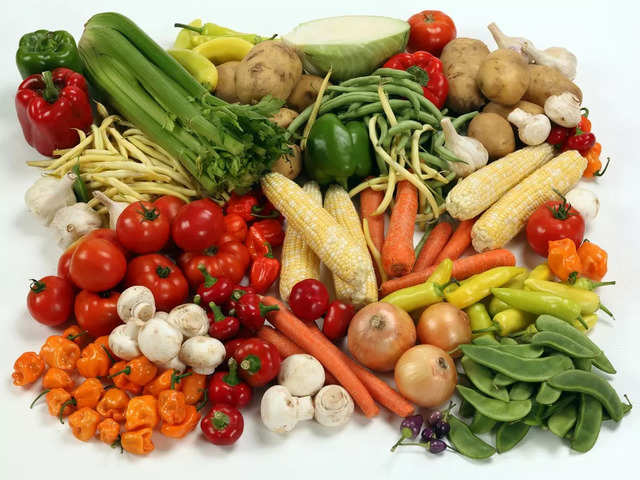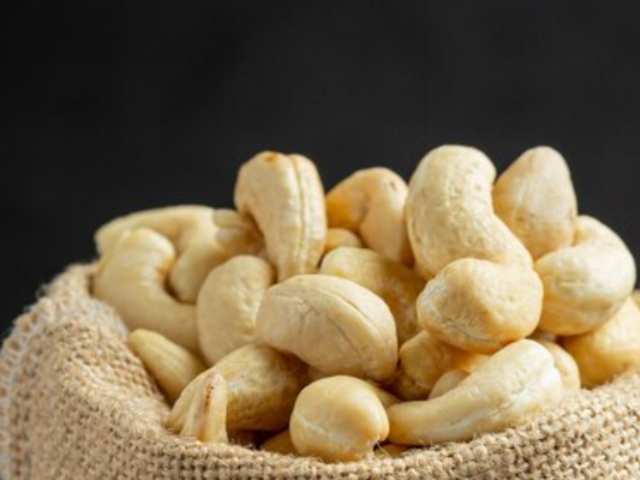
Snapdeal's pre-Diwali sale kicked-off on October 16 and ended on October 20Snapdeal
Snapdeal is witnessing the return of enthusiasm for festivities
Oct 26, 2020, 10:20 IST
brands
Why Snapdeal targeted non-metro cities and rural India during its pre-Diwali sale
- Snapdeal added 6 million new buyers on its platform during the pandemic.
- Its recent 5-day sale kicked-off on October 16 and ended on October 20.
- Rajnish Wahi, Senior Vice President, Snapdeal tells us some of the trends the platform saw during its pre-Diwali sale, its plan to go deeper into Bharat and USPs that helped it stand out in the clutter of online sales.
According to Snapdeal, less than 5% percent of retail is online and during this on-going
Snapdeal observed that consumers weren’t willing to buy premium brands this year and wanted to access the online platforms in their regional language. So, as other e-commerce platforms offered premium brands at a discounted price, Snapdeal wanted to make online shopping more inclusive for buyers across India. It focused more on non-metro cities, which is a market with potential 400 million users and shipped orders to rural places like Palasner in Maharashtra, Abdasa in Gujarat, Kalsi in Uttarakhand, Chitkul in Himachal among many others.
Ahead of the sale, Snapdeal added 1300 new pin codes to go deeper into Bharat, areas which were previously unserviceable or where users were compelled to travel to nearby towns to collect their orders. It also updated its user interface by adding eight languages including Hindi, Tamil, Kannada, Telugu, Malayalam, Gujarati, Punjabi, and Marathi.
As a result, 70% of its orders were received by sellers located beyond the top 5 metropolitan areas of the country and 90% of its orders were placed from non-metro cities.
We caught up with Rajnish Wahi, Senior Vice President, Snapdeal to further understand some of trends that the platform saw during its sale.
Excerpts:
Q. The role of engagement and communication has never been more important, especially in today’s digital-first world. How are you making sure your communication during this year's sale is relevant to consumers?
Snapdeal is sharply focused on catering to the value-conscious consumers, who see e-commerce as the connecting link between their aspirations, access and affordability.
Our theme for this year’s festive sale - “Kum Mein Dum Diwali '' clearly communicates our core message - your shopping rupee has more value this year. As part of our sale preparations, we had conducted a survey of nearly 1.25 Lakh users and one of the key insights was user unwillingness to pay for brand premiums this year and instead focus on the functional value of their purchases.
Based on these inputs, the festive assortment was expanded in a focused manner by on-boarding additional sellers for popular products like kitchen appliances, kitchenware, bed linen, apparel, footwear and fashion accessories like watches, wallets, etc. Shaping our sale offers around the clearly-stated expectations of our customers and conveying the same unambiguously through our festive promotions and digital marketing is the sum and substance of our festive communication.
Q. This year is different. People have been observed to be judicious in spending. How has the consumer sentiment improved?
While 2020 has been a volatile year, we see that there are many tailwinds that are propelling our business. The pandemic has resulted in redistribution of demand between offline and online channels, with online gaining share due to its inherent advantages of reach, convenience, large assortment and safety of buying from home. It has also accelerated the familiarity and acceptance of e-commerce amongst new buyers.
With the pandemic, consumers have become more price conscious and are likely to opt for lesser-priced products, while not compromising on their quality expectations. Given all of this, we have seen two sets of buyers come on Snapdeal - one which is trading up to a better assortment and one that is trading down and opting for better functional value instead of big brands. In fact, we have added 6 million new buyers on our platform in the pandemic.
We are witnessing the return of enthusiasm for festivities and it is also apparent that online channels will be a preferred medium for a larger number of buyers this year. But it will also be different this year, as more people will be price conscious and will look to spend on quality products that suit their price sensibilities.
In a way, Snapdeal’s “Kum Me Dum” focus is about “offering more choices at price points better than last year”, especially for popular categories like home & fashion, which has been made possible by year-long focus on expanding our value selection.
Q. With the on-going festive season, many other platforms will have their Sales days too. How do you then cut the clutter and make sure you win consumers? How will you be different from the other players in the segment?
Snapdeal is synonymous with value e-commerce. While others in the industry are now starting to build a value segment, we at Snapdeal have been focused on “only value” for the last three years.
While other platforms are making efforts to sell branded items at discounted prices, these are still not affordable for a majority of the buyers in the country.
On the other hand, we are focussed on bringing the depth and diversity of India's bazaars & markets to the doorsteps of our users. On Snapdeal, buyers find endless varieties of regional and local brands that not only serve their needs, but also offer immense value at affordable prices.
The result of our “Kum Mein Dum” Diwali sale bears testimony to this - more than 80% of Snapdeal’s Diwali shoppers chose to buy regional & local brands on Snapdeal. The strong growth of lesser-known brands relative to national/international brands has been because of two key reasons: increased choice and a substantial price difference.
Our value-focused positioning runs consistently through our selection and communication and is one the reasons why 90% of our orders flow from non-metros cities and towns across the country.
Q. What are some of the other trends you are expecting to see this festive?
Our first sales results are out and are reflective of how close the lives of users revolve around their homes. The sale in the home products category has grown by 30% over last year and has become the largest category on Snapdeal this year, overtaking the fashion category, which has traditionally been the top-performer at Snapdeal. The growth in the home category is propelled by popular products like kitchen appliances, kitchenware, bed & bath,decor,cleaning equipment, lighting and comforters & blankets etc.
This growth in the fitness category reflects the extra time that people have on their hands and also underscores heightened awareness about personal health & fitness. This category has grown by 45% over last year led by gym essentials like tummy trimmers, push-up bars, wrist supports, fitness gloves, hand grip strengtheners etc. Users buying sports equipment like badminton racquets & cricket sets and weighing machines are also strong consumer trends.
While the fashion category has also grown from previous years in terms of shipped units, the growth is less than other higher-performing categories. In the fashion category, there is an increased spending on kidswear in the festive season. .
Among popular picks in Snapdeal’s Diwali sale are men’s & women’s grooming products, nutritional supplements, religious items (prayer books, temples accessories etc). With the deterioration of air quality in North India, the sale of N95 masks, air-purifier filters, anti-pollution skincare items, skin moisturisers, lip balms has also increased.
Snapdeal also witnessed an increase in gifting via e-commerce early in this festive season. The range of festivals starting with Karva Chauth and followed by Dhanteras, Diwali, Bhaiya Dooj and Chhath Puja have become important gifting occasions for users in various parts of the country. While in the previous years, shoppers used e-commerce channels to buy and ship to families & friends in other cities, this year many shoppers in metro cities are also sending gifts to people living in the same cities. This year gift cards have also been hugely popular among people to send to their friends and family, with a 3X surge in orders as compared to the festive sale last year. These included gift cards of travel, entertainment, food and retail brands which were upto 30% off.
Q. How are you working towards improving the overall consumer experience?
E-Commerce in India has grown beyond the first 100 Mn largely urban, English-speaking users. A market of potentially 400 Mn users is now emerging across India’s smaller non-metro cities. This is a very diverse cohort in terms of languages spoken, literacy levels, frequency of online purchases and familiarity with technology. A large part of Snapdeal’s existing user base and new users come from this cohort and all our focus and efforts are on building the right experience that our users want.
That means we work tirelessly to give them a wide array of products to choose from, and at just the right prices they are looking to spend. We also make it easy in many other ways for users to buy on Snapdeal. This includes providing interfaces on our app & m-site in eight Indian languages, so that they can browse through products & transact in a language of their choice. We also enable conversation with our customer service agents in multiple Indian languages. Transaction and promotional messages all are available in many Indian languages.
Some other ways, in which we support our users to buy is by helping them make well-informed choices through short 10-second product videos which are far more captivating and help buyers to make decisions faster than static pictures of the products concerned, easy 7-days return, no questions asked refunds policy. We are the only platform that provides uninterrupted access to cash-on-delivery option even during the turbulent early days of pandemic lockdowns.
Q. Which are your strongest markets currently? How are you planning to strengthen your presence in other markets?
We have a strong pan India presence. During the current sale and consistent with Snapdeal’s positioning, more than 90% of Snapdeal’s orders were placed from non-metro cities.
Populous cities like Nagpur, Vijayawada, Surat, Bhopal, Chandigarh, Visakhapatnam, Ranchi, Patna, Guwahati and others continued to drive orders on Snapdeal, but smaller cities like Sagar (Madhya Pradesh), Raniganj & Durgapur (West Bengal), Patiala & Gurdaspur (Punjab), Anand, Bharuch, Una, (Gujarat), Miryalaguda (Andhra Pradesh) and Bhimavaram (Telangana) also clock impressive order volumes.
With our recent network expansion, Snapdeal has also shipped orders to rural places like Palasner in Maharashtra, Abdasa in Gujarat, Kalsi in Uttarakhand, Chitkul in Himachal amidst many others.
Q. What are your current MAUs?
More than 70 million users visit Snapdeal every month to browse and buy from our vast catalogue of 220 million plus listings.
Q. What kind of target have you set for this year's sale? Do you anticipate people to buy more, considering a lot of people might have pushed buying things for the festive season? What kind of numbers do you aim to reach this year?
Less than five percent of retail is online, which is an incredibly small penetration number. In our view, Diwali or not, our job to bring more buying options for our users doesn’t change. Diwali does serve as a milestone to accelerate some of our related initiatives or build virtual infrastructure to connect the dots between demand and supply in our country.
This year, ahead of the festive season, we on-boarded additional sellers of popular products like kitchen appliances, kitchenware, bed linen, apparel, footwear and fashion accessories like watches, wallets, etc., as indicated by our users in a survey. In the run-up to Diwali, Snapdeal also on-boarded 5000 manufacturer-sellers who sell products like water purifiers, choppers & blenders, steel & copper utensils, crockery items, bedsheets, quilts, geysers, etc directly from their manufacturing units.
This year, we knew more and more people would be buying online and ahead of the sale, and expanded our network to add 1300 new pin codes to go deeper into areas which were previously unserviceable or where users were compelled to travel to nearby towns to collect their orders, reaching out to 50 million additional users.
Today, we are India's leading value-focused marketplace with more than 500,000 registered sellers and we cover 27000 + pin code areas across the length and breadth of the country.
INSIDER INTELLIGENCE REPORTS







